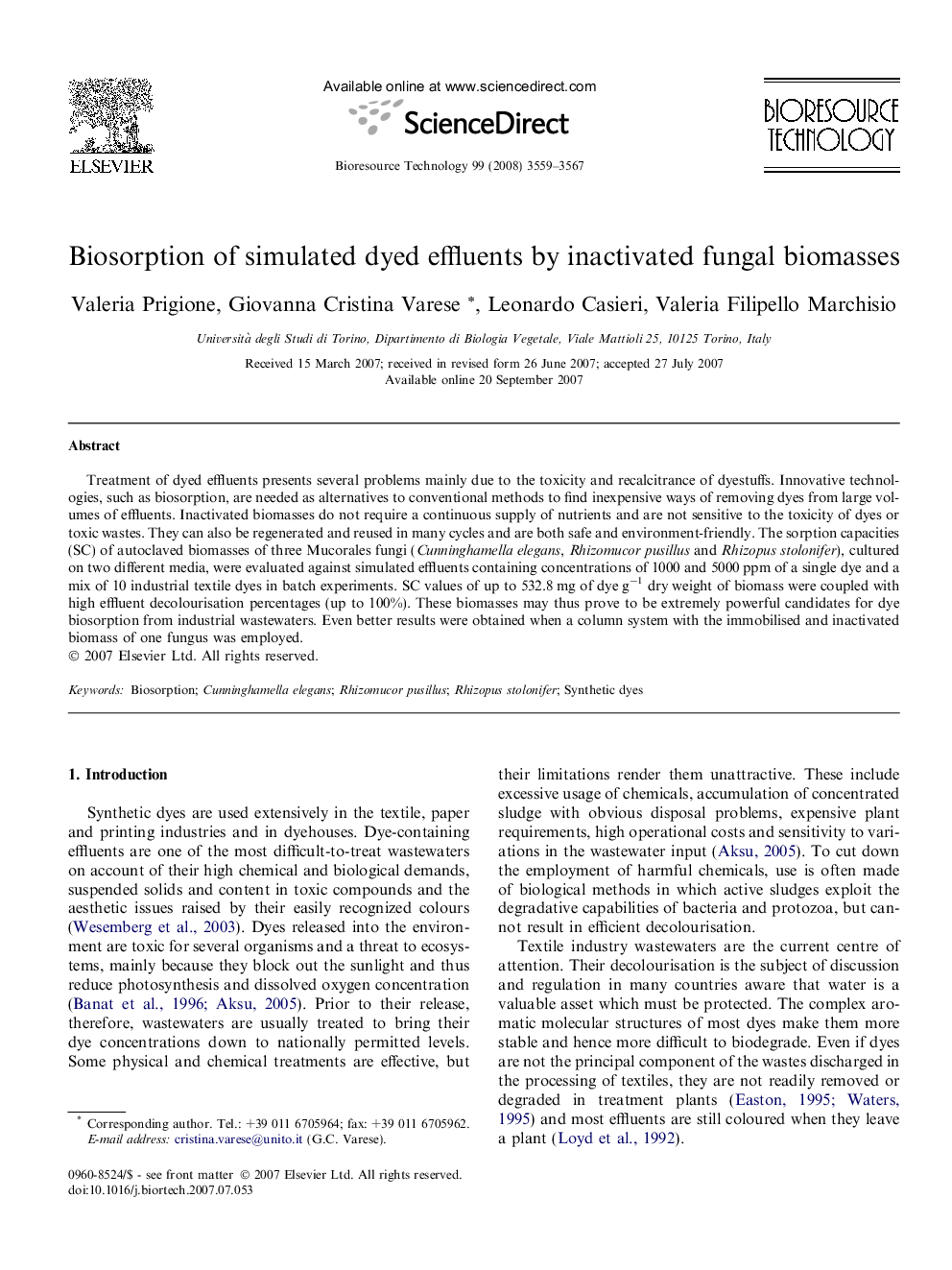| Article ID | Journal | Published Year | Pages | File Type |
|---|---|---|---|---|
| 686344 | Bioresource Technology | 2008 | 9 Pages |
Treatment of dyed effluents presents several problems mainly due to the toxicity and recalcitrance of dyestuffs. Innovative technologies, such as biosorption, are needed as alternatives to conventional methods to find inexpensive ways of removing dyes from large volumes of effluents. Inactivated biomasses do not require a continuous supply of nutrients and are not sensitive to the toxicity of dyes or toxic wastes. They can also be regenerated and reused in many cycles and are both safe and environment-friendly. The sorption capacities (SC) of autoclaved biomasses of three Mucorales fungi (Cunninghamella elegans, Rhizomucor pusillus and Rhizopus stolonifer), cultured on two different media, were evaluated against simulated effluents containing concentrations of 1000 and 5000 ppm of a single dye and a mix of 10 industrial textile dyes in batch experiments. SC values of up to 532.8 mg of dye g−1 dry weight of biomass were coupled with high effluent decolourisation percentages (up to 100%). These biomasses may thus prove to be extremely powerful candidates for dye biosorption from industrial wastewaters. Even better results were obtained when a column system with the immobilised and inactivated biomass of one fungus was employed.
